Vodka Martinis Go Green: Distillery 98 is a Trendsetter for Sustainable Spirits


Who doesn’t love an excuse for an espresso martini, Moscow mule or cosmopolitan? Luckily you can have your sustainable cocktail and drink it, too. In the sun-drenched stretches of the Florida panhandle, Distillery 98 produces small-batch vodka with a healthy pour of environmental responsibility.
Co-founders Harrison Holditch and David Kapitanoff pride themselves on using local ingredients and minimizing their environmental impact. “It was just a hobby turned into a profession,” Holditch told TriplePundit. “It’s kind of a long road that took us here, but this is definitely where we belong. The goal is not only to provide a great-tasting vodka, but to do that sustainably.”
As it turns out, they may be onto something.
The footprint of the vodka industry
At first glance, vodka — which is typically made from grains or vegetables — appears to have a low carbon footprint. While that’s true for a single bottle, the footprint of America’s annual vodka consumption is large, equivalent to burning 2.74 billion to 2.96 billion pounds of coal. Most of that carbon footprint comes from manufacturing glass bottles and the energy-intensive distillation process.
Distilleries also produce a lot of wastewater, 12 times more than they do alcohol, according to a 2020 study. Unfortunately, this waste is difficult to dispose of since it’s highly acidic and contains a lot of organic matter.
The makings of sustainable vodka
Distillery 98 is tackling these challenges head-on. “Our new cardboard bottles have six times less of a carbon footprint than a glass bottle,” Holditch said as an example. “A lot of glass right now is coming from India and China. Not only is the carbon footprint massive when it comes to manufacturing these bottles, but shipping them over here adds to that. That’s a big reason we switched to our paper bottle.”
Distillery 98's recycled paperboard bottles by Frugalpac are lighter than glass and decompose much faster than their glass or plastic counterparts. That’s a good thing since glass breaks down extremely slowly — archaeologists found glass artifacts dating from 1500 B.C., for instance.
“We’re the first spirits in the U.S. with this Frugal bottle,” Holditch said. “But I don’t see that lasting much longer. I think it’s a game-changer for our industry.” Other spirits labels, including Johnnie Walker, have also tried out paper bottles made by other manufacturers.
But the distillery didn’t stop at bottles. It uses sustainable swaps for other vital materials and processes, too. Carbon filters, for example, are necessary to remove impurities but are commonly made of wood or coal. Distillery 98 uses coconut carbon filters instead, a renewable, more environment-friendly option. Temperature control is another important part of the procedure, for which water is typically used to cool equipment. Distillery 98 uses renewable, geothermal energy.
Vodka-making at Distillery 98 is also a local affair: The company uses locally-sourced corn for its vodka and donates the spent grain back to Florida farms as livestock feed. The vodka is filtered through Gulf Coast oyster shells to lower the acidity and give it a smoother taste. And in the tasting room, one bartender makes pecan liqueur on his own farm and blends it into his espresso martinis — a great excuse for one if I ever heard it.

The distillery also sponsors recycling days and cleanup days on the dune lakes in its home base of Santa Rosa Beach and surrounding communities in the Florida Panhandle.
Encouraged by the progress to date, the company plans to expand its sustainable practices. “We’re looking to upgrade our equipment at the distillery,” Holditch said. “Some of the things we’re talking about is bringing in a [desalination] machine. We’re going to treat the water before it goes in our stills and then clean it and continue to use it all in-house. We’re working on getting everything run by solar panels, as well. Now that we’re upgrading, we can really focus on building a green system from ground zero.”
The future of vodka is green
All this laborious effort is worth it. The global vodka industry was valued at over $42 billion last year and is expected to grow to $56 billion by 2027, according to data analysis company Statista. Americans have been steadily sipping more of it over the last two decades, especially flavored vodkas.
Sustainable brands may be poised to take a larger slice of this vodka pie. Consumers, particularly Gen Zers, prefer to buy from sustainable brands. They’re also willing to pay more for products that are environmentally-friendly, prioritizing this over brand name. Young people’s focus on sustainability extends to investing as well, with the majority of them planning on, or already engaged in, socially responsible and impact investments.
A cadre of sustainable distilleries
Distillery 98 joins a growing group of spirits companies heeding the siren call of sustainability, from legacy brands like Kahlúa and Mount Gay Rum to newcomers like Dulce Vida Tequila. These companies are using organic and locally-sourced ingredients, creating reusable bottles and using production waste for fertilizer. They’re also embracing sustainable farming practices and solar energy and powering their facilities with methane gas emitted from operations.
So, next time you’re whipping up an espresso martini, make sure to use liquor brands that are doing their part for a sustainable future. Or just try the pecan one a Distillery 98, it sounds delicious.
Images courtesy of Distillery 98
Farmers Look to Social Media for Help After Vermont Floods


Morgan Gold (right) and Allison Ebrahimi Gold on their farm in Peacham, Vermont.
When recent floods in Vermont broke rainfall records, one farmer used his social media platform to fund emergency disaster grants for neighbors whose crops were destroyed.
As weather patterns become more volatile, the risk for crop loss in the agricultural sector grows. Specialty crop farms — which include small- and mid-sized fruit, vegetable, flower and pastured livestock farms — are in an especially vulnerable position because protections like crop insurance are inaccessible to them.
Morgan Gold owns and operates a duck, goose, cattle and tree farm in northern Vermont called Gold Shaw Farm. He and his wife started farming in 2017 with no prior experience in agriculture, so Gold decided to document their experience of starting a farm on YouTube. His account quickly took off. Today, he has about 4.5 million followers across YouTube, Facebook, Instagram and TikTok.
After the massive flooding in Vermont wreaked havoc on farms across the state last month, Gold hosted a 24-hour livestream to raise funds for the Northeast Organic Farming Association of Vermont (NOFA), an agency that distributes disaster relief funds to farmers.
“Our farm was very lucky,” he said. “We lost 14 or 16 ducklings that lived on pasture with their mothers. But I felt incredibly lucky because friends in the next town over had pastures completely flooded. Market gardeners had their fields wiped out. Because I was lucky and I have a platform, I knew I needed to do something.”
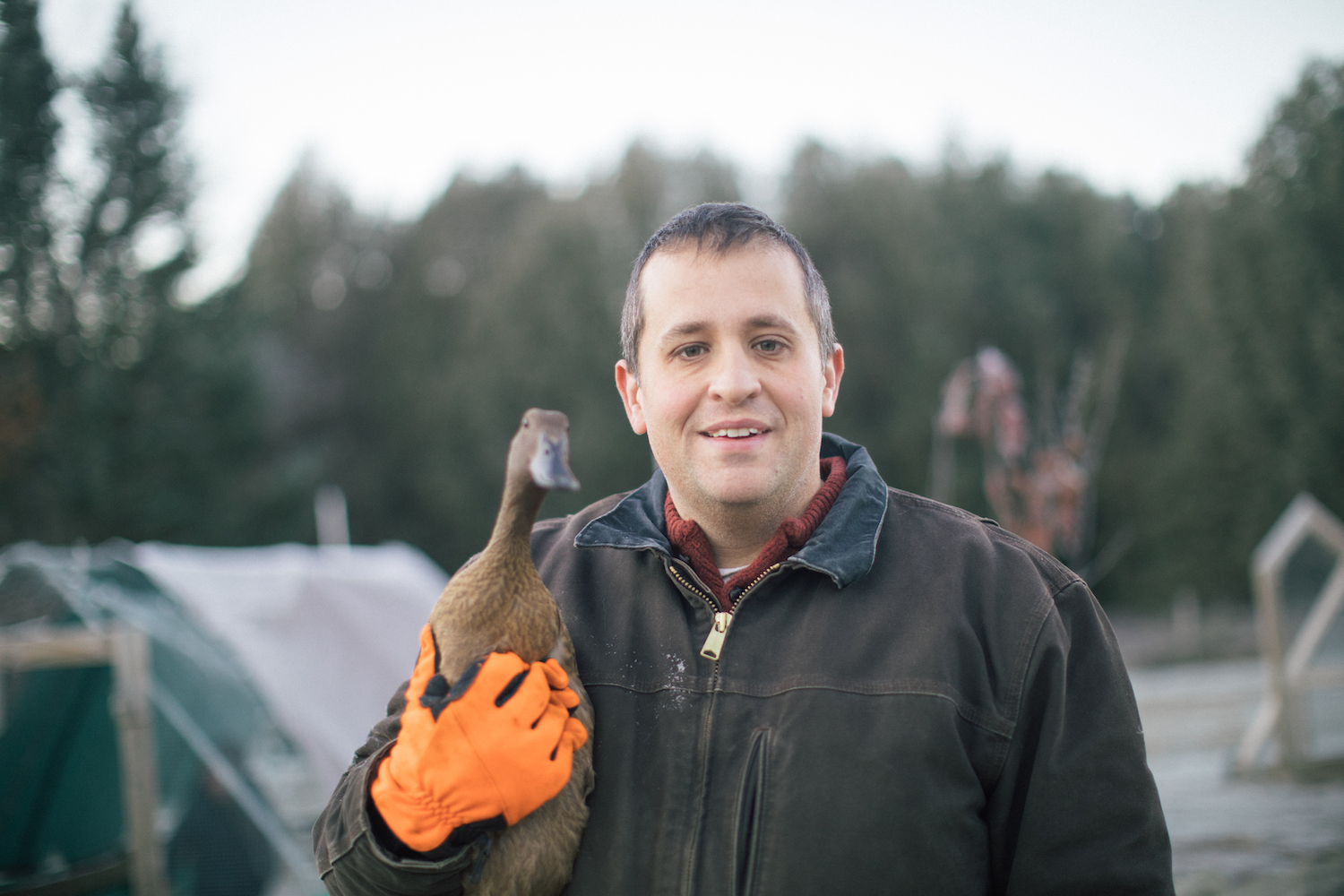
The power of social media
The livestream was broadcast on YouTube and Facebook and featured call-in guests including friends, supporters, subscribers and Vermont's secretary of agriculture, Anson Tebbetts. “I set up webcams around the farm, and I would take my phone with me when I went to pasture to move cattle,” Gold said. “I produced the event while I was on screen.”
Gold encouraged viewers to donate to NOFA Vermont’s Farmer Emergency Fund. “This fund has been established for years, and it seemed the easiest and most direct way to get dollars into the hands of farmers who are in need,” he said.
The stream had over 80,000 viewers and raised $22,000 for the fund with contributions from people all over the world. Gold incentivized donations with creative special offers, such as a live reading of his new children’s book, “Toby Dog of Gold Shaw Farm,” inspired by (you guessed it) the farm's faithful dog. This combination of community engagement, entertainment and incentive drove the success of the fundraising efforts, Gold said.
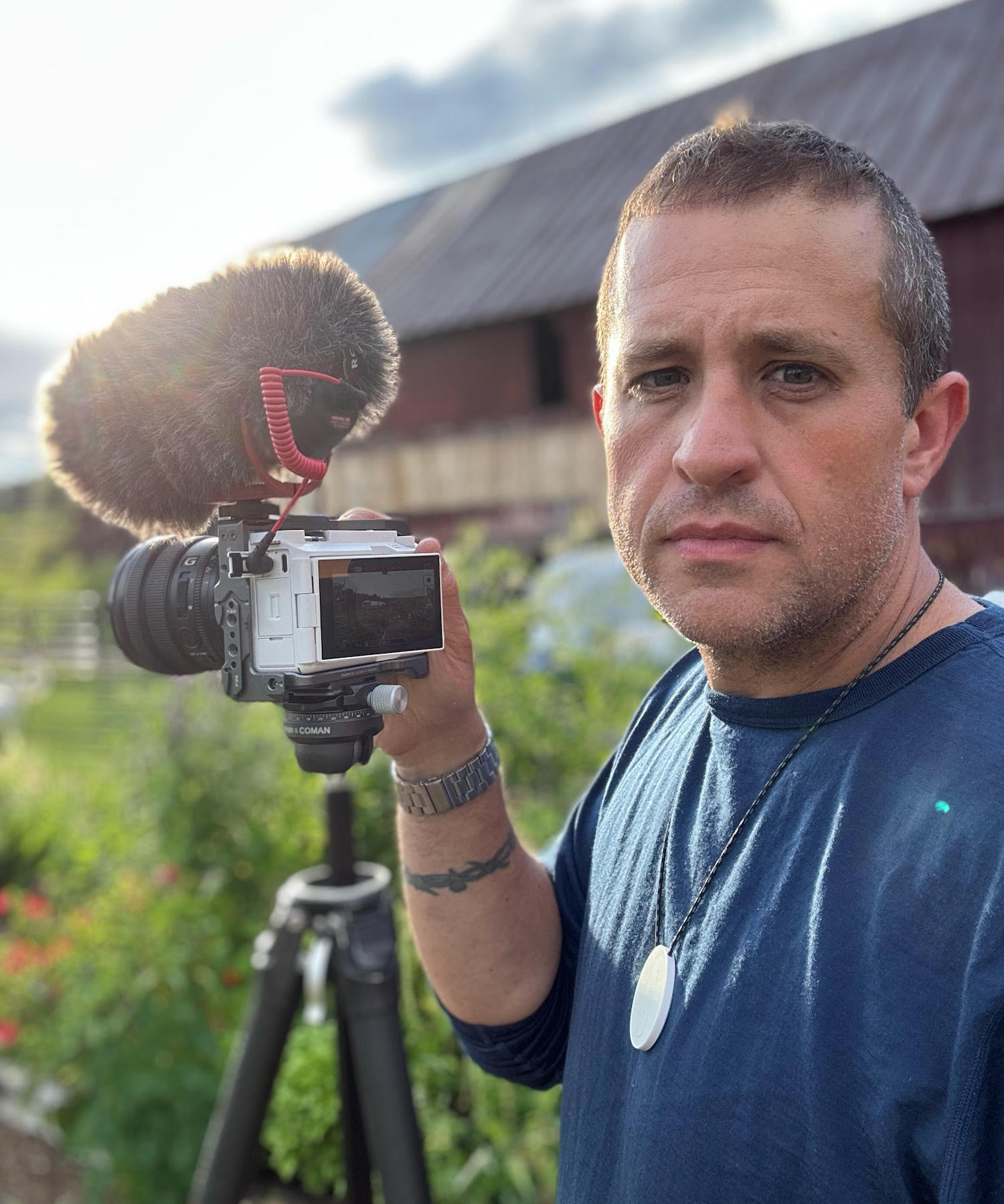
Small farms can't rely on insurance
NOFA Vermont’s emergency fund is critical for many small- and mid-size farmers in the state, as crop insurance is often not accessible or affordable for specialty crop farms.
“There is a broad perception by the public that when a disaster hits, farmers will get paid out,” Gold said. “The perception is misguided ... When you are in an area like ours, flood insurance isn’t common, and business owner protection is not going to be covered for an event like this. Farmers aren't carrying some magic insurance that covers this, and USDA is not going to come and give everyone a check. Commodity farmers might be in a different camp, but smaller, more diversified farms have a harder path for recouping losses.”
Losses from this summer’s floods were especially difficult for Vermont farmers because mid-summer is typically when sales peak, and money earned in the summer months is critical for supporting their operations year-round.
Reflecting on his ability to raise money for other farmers with his platform, Gold said crowdfunding can help in a crisis, but relying on the financial support of social media viewers is not a viable long-term strategy for funding ongoing operations.
Still, he encourages all farmers to think about their digital strategy. “Building an audience on social media helps build broader relationships, and that’s where real opportunities come in.”
Images courtesy of Morgan Gold
Allbirds Made a Net-Zero Shoe and Wants Other Brands to Copy It
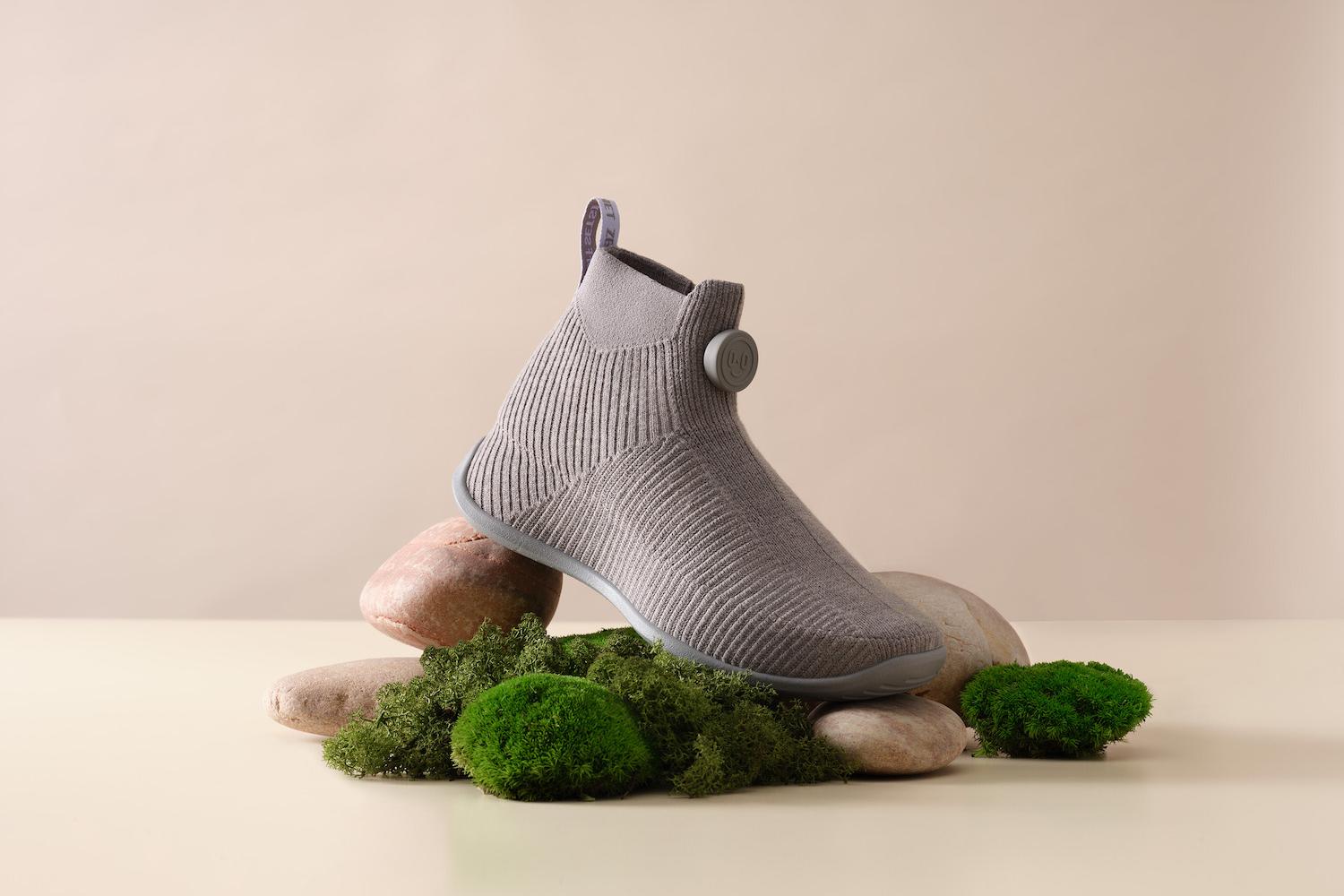
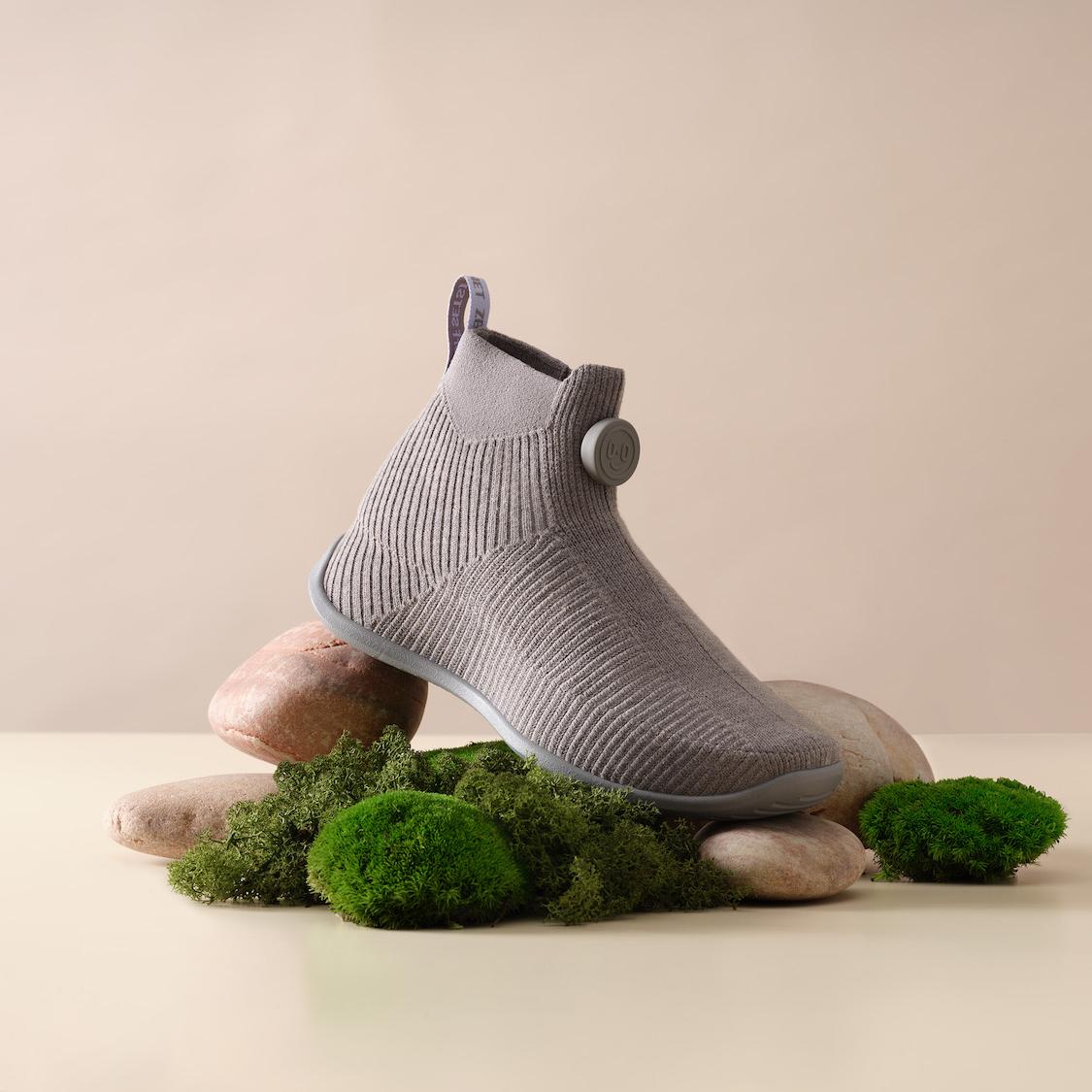
The world’s first net-zero shoe is here. Allbirds' recently unveiled high-top shoe, called M0.0NSHOT, is slated for commercial release next spring. Urging others to follow its lead, the cult favorite footwear and apparel brand released all of the information necessary for companies to create their own net-zero shoes — from design to manufacturing to carbon measurement. And the recipe doesn’t rely on purchasing carbon offsets.
“You would normally think a company brings in a new material to their products and they want keep it safe because it's proprietary,” Aileen Lerch, Allbirds’ senior sustainability officer, told TriplePundit. “But in the case of a lot of these solutions, especially to climate change, we actually need an industry-wide adoption for this to become a scalable solution [and] for costs to come down.”
The path to a net-zero shoe
The M0.0NSHOT net-zero shoe isn't Allbirds first foray into climate action and low-carbon materials. The company first created SweetFoam, a midsole foam made from carbon-negative, sugarcane-derived bioplastic, back in 2018. Its latest iteration of the material is used in the midsole of the new M0.0NSHOT shoe.
Allbirds also became the first fashion brand to label products with carbon footprints in 2020. It then partnered with Adidas to make what was the lowest-carbon shoe in the world at the time, the Adizero x Allbirds, before it began developing M0.0NSHOT.
“It’s rare in the footwear industry for two brands to come together and create a shoe. You almost never see it,” Lerch said. “It was this moment that we really recognized, ‘Hey, we’re running the wrong race here. It’s not about us versus them, or two footwear companies competing against each other. We’re all trying to do the same thing and decarbonize our businesses.”
The design
The M0.0NSHOT shoe uses carbon-negative, regenerative wool sourced from Lake Hawea Station, a sustainable sheep and beef farm in New Zealand that sequesters more carbon than it emits. Along with the new sugarcane midsole foam, it's also made with methane-capture bioplastic via a partnership with Mango Materials and sugarcane-based polyethylene packaging, another carbon-negative material that reduces the weight and space required for transportation.
“We didn’t just make the world’s first net-zero carbon shoe. We also made the second, third, fourth net-zero carbon shoe, and so on, as we explored different prototypes to create an appropriate visual identity for this milestone,” Jamie McLellan, design lead on the project, said in a statement. “As we thought about this ‘shoe of the future,’ we were clear that M0.0NSHOT couldn’t look like something from the past. We’ve not just reimagined the science of a sustainable shoe, we’ve reimagined the design, too.”
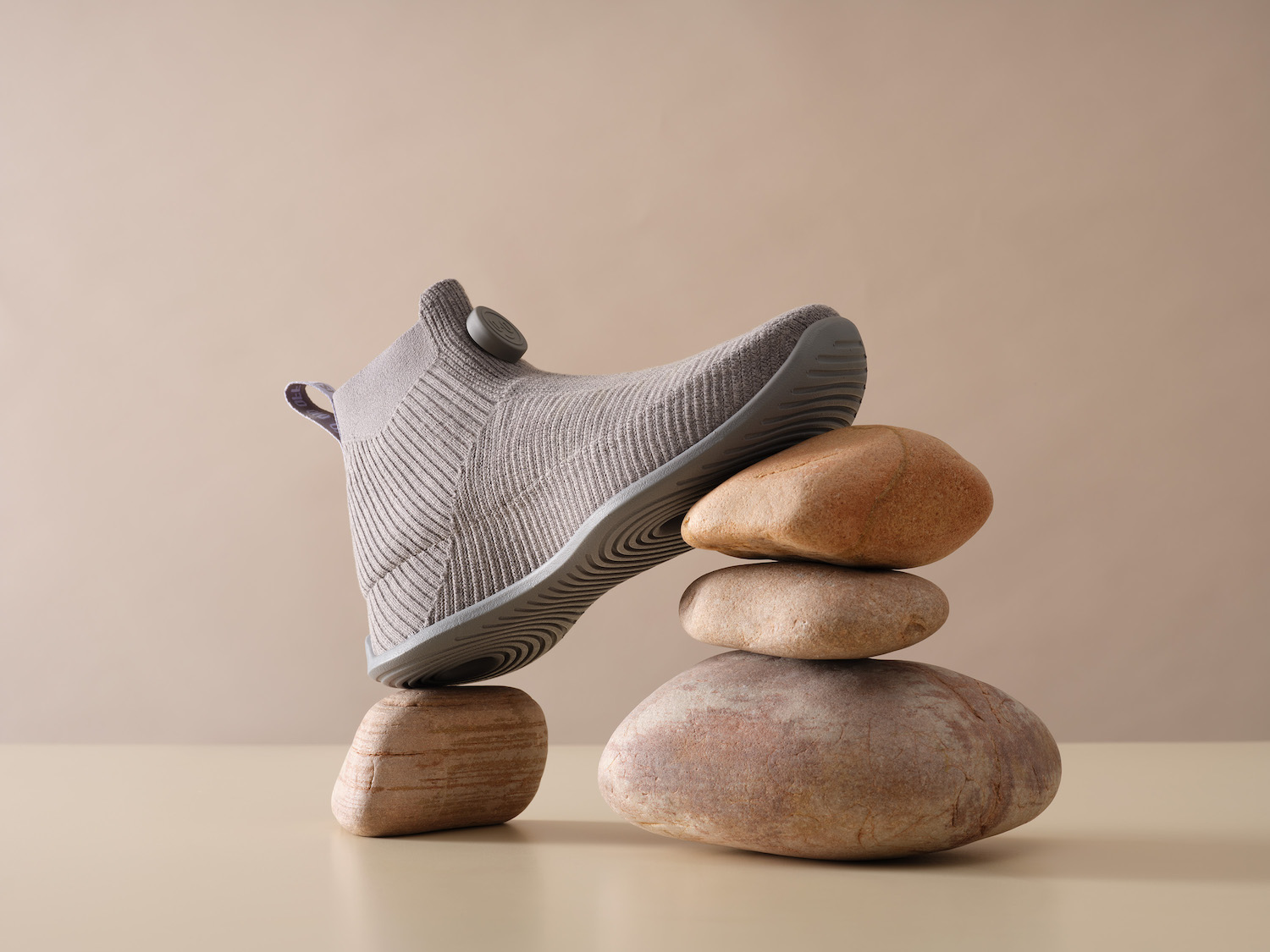
Will the footwear industry follow suit?
But Allbirds isn’t stopping at creating a net-zero shoe. The company is looking at what it calls the “five lifecycle areas” of the M0.0NSHOT shoe, which include the energy required to manufacture it, the energy used in transportation, the emissions associated with disposal, and emissions created during use — particularly those associated with washing the shoe.
“Our goal for a lot of these actions is: How do we scale it across our business and scale it across our industry?” Lerch said. “That was a lesson that we applied for this shoe, and we’re excited to keep scaling as we work toward a commitment to have 100 percent renewable energy at our tier-one factories and final assembly factories by 2025.”
Most of Allbirds’ shoes are manufactured in Vietnam, which Lerch said is “quite an interesting place” right now for brands who are advocating for renewable energy. The country’s new national energy plan looks to increase much-needed power generation and shift away from coal, but still relies on gas in combination with renewable energy. The company joined other brands and factories in signing a letter encouraging Vietnam’s energy utilities to integrate renewable energy into the power grid.
Open-sourcing the M0.0NSHOT shoe is crucial to moving the footwear industry to reduce its carbon footprint, Lerch said.
“If there was just one granola bar company labeling calories, you wouldn’t actually understand it. You need everyone to do it,” she said. “We saw that we couldn’t just stop at the product. It’s about democratizing and scaling the solutions because these are problems that are not just specific to Allbirds. We all need to be taking collective action to mitigate and reduce the impacts of climate change.”
Images courtesy of Allbirds
Powerful Ways Everyday People Can Counter 'Anti-ESG' Campaigns That Target Sustainable Investing


An estimated 7.6 million young people have taken part in Fridays for Future protests in support of climate action, like this 2019 demonstration in Zürich, Switzerland. But protesting isn't the only way for people to make their voices heard.
The anti-ESG movement, led primarily by a small set of right-wing politicians and pundits, continues to target the use of environmental, social and governance factors in investing. The pushback against ESG and "woke capitalism" is set to be central in the next U.S. presidential election cycle, with critics ramping up the discourse in advance.
Still, the public appears uninspired by the far-right's latest bogeyman, with only about 35 percent of U.S. voters viewing "woke ideologies as a 'major threat' or a 'very important' issue when thinking about their 2024 vote," according to July polling from Morning Consult.
Those growing tired of the anti-ESG discourse don't have to resign to simply tuning it out. We spoke with Andrew Behar, CEO of As You Sow, a nonprofit foundation that promotes shareholder advocacy, about powerful ways everyday people can voice what they really think about ESG and the shift toward more sustainable and socially responsible ways of doing business.
Take action: Counter anti-ESG narratives by learning and sharing
The much ado about anti-ESG may not have the effect critics intended. While the majority of the public remains ambivalent, anti-ESG criticism has also sparked new conversations where there were none before. "The good news is there are tens of millions of people who'd never heard of ESG who now have heard of it. They'd never heard of sustainable investing — they didn't know you could invest sustainably," Behar said. "Now they're aware their investing has an impact. And actually a lot more people are coming to ESG investing because of it. I think it's really backfiring."
Still, anti-ESG narratives can create confusion about what ESG criteria are actually meant to do. Last year, As You Sow launched the AmplifyESG content library to counter the misinformation about ESG online. It's curated by an editorial review board that includes representatives from business and both U.S. political parties, Behar said.
Hosted on Hootsuite, the library is updated at least a few times a week with articles, quotes, videos and other resources about ESG, which users can easily share across their social media platforms as they choose. Shares from AmplifyESG have reached nearly 3 million people over the past year, and anyone can get involved in driving more evidence-based conversations about ESG in business.
Take action: Leverage your right to vote
No, we don't mean at the ballot box. Of course that's important, too, but in this case we're talking about the proxy voting rights afforded to everyone who owns shares in a publicly-traded company. "If you're an individual who has bought shares on E-Trade or Schwab or Robinhood or whatever, you have the right to vote — even if you own just one share," Behar said. "And that vote is very, very important."
An estimated 25 percent of all shareholders do not exercise their proxy votes, he explained. "If those 25 percent decided to get off the bleachers and get on the playing field, that makes a big difference. That makes the difference between a majority vote or one that's just under the majority line."
But exercising the right to vote by proxy is traditionally not a user-friendly process for individual shareholders. "It's always been difficult," Behar said. "Generally you get an email that says, ‘Time to vote.’ But when you look at the ballot, there's 20 or 30 decisions to make. Who's on the board? How much do the executives get paid? Who's the auditor? What about all these shareholder resolutions? It's very complex."
As You Sow has published annual proxy guidelines for decades, outlining votes they deem to be aligned with ESG principles. Three years ago, it automated the process by embedding its guidelines into Broadridge Financial Solutions' ProxyEdge platform for institutional investors. The paid service allows institutions like asset managers, endowments and foundations to vote in an ESG-aligned way in only a few clicks. They can also customize their votes from As You Sow's defaults as they choose.
This year, As You Sow went a step further with a free service for individual investors at AsYouVote.org. "You can now redirect that email so we will automatically fill in the ballot," Behar said. "It'll all be filled out in an ESG-aligned way, and you can make adjustments."
This simple shift allows individual shareholders to move from being overwhelmed by proxy voting emails to automating the process of voting with their values, with the option to customize if they'd like. "I think a lot of people feel guilty. They see all these proxy statements piling up in their inbox and they think, 'I just can't deal with it.' What you'll get instead is, 'Thanks for voting.' You'll feel great about yourself, and it takes literally two minutes to set up."
Take action: How mutual fund and 401(k) investors can make their voices heard
Traditionally, people who invest in funds rather than individual stocks have a much harder time making their voices heard come proxy season, but this is beginning to change thanks to new technology.
"If you own shares in a mutual fund, you have the right to vote. Right now, you have abdicated that right to Vanguard or BlackRock or State Street or whoever, and they're voting on your behalf. They're probably not voting the way you like," Behar said. "You might want to vote for a livable planet. You can demand that. You can say, 'I want that vote,' and they will give it to you. It's very new. The technology is just unfolding."
Technology advancements mean that individual mutual fund investors can vote their own proxies, with the fund manager voting in alignment with the aggregated results at a company's annual shareholders meeting. This is known as pass-through voting.
In April, As You Sow linked up with the proxy technology company Iconik to make this option available to investors in an S&P 500 mutual fund. Hundreds of investors have already taken advantage of it, Behar said, with more funds on the horizon. "We're now in conversations with every other proxy voting service," he said. Broadridge Financial Solutions, a major tech provider for institutional investors, is among those working with fund managers to make this option available to their customers. Get in touch with your fund manager to see what options you have.
Similarly, those who invest in 401(k) plans through their employers also have the right to vote by proxy, but they need to reclaim it from the fund managers associated with their plans. "If you're in a 401(k) plan — where you probably own a target date fund, which is a fund of funds — you're going to need to go to your plan administrator and say, 'I want to vote.'"
If employees band together to ask for their vote, the employer can decide to work with the fund manager to make the option available. As You Sow is in talks with employee-organized groups at companies including Google and Microsoft, who want to leverage the voting power associated with their 401(k)s.
The bottom line: You have more power than you think
Counter to the anti-ESG narrative, most people want to see business operate sustainably, with 99 percent of millennial investors, 82 percent of women and 72 percent of people overall saying they would choose to vote their proxies with sustainability in mind, according to polling from As You Sow.
"We know we've got this vast majority of folks who actually want to vote to get corporations to provide a livable planet," Behar said. "It's a matter now of just getting people to talk about it and say, ‘Okay, I'll do that. I'll click that.'"
Where market forces are already driving business closer to ESG principles, everyday people realizing and claiming the power they hold could open the floodgates.
"People abdicate their power. The way people give away their private personal information to Facebook, they abdicate the power of their money to Vanguard, State Street and BlackRock. It's amazing. People give away all their power and all their information for nothing," Behar said. "We have a culture where people look at things like climate change and think, ‘There’s nothing I can do.’ No. You have so much power. You just choose not to use it."
Image credit: Tom Seger/Unsplash
Heat-Related Illness: Workplace Prevention is Just the Beginning
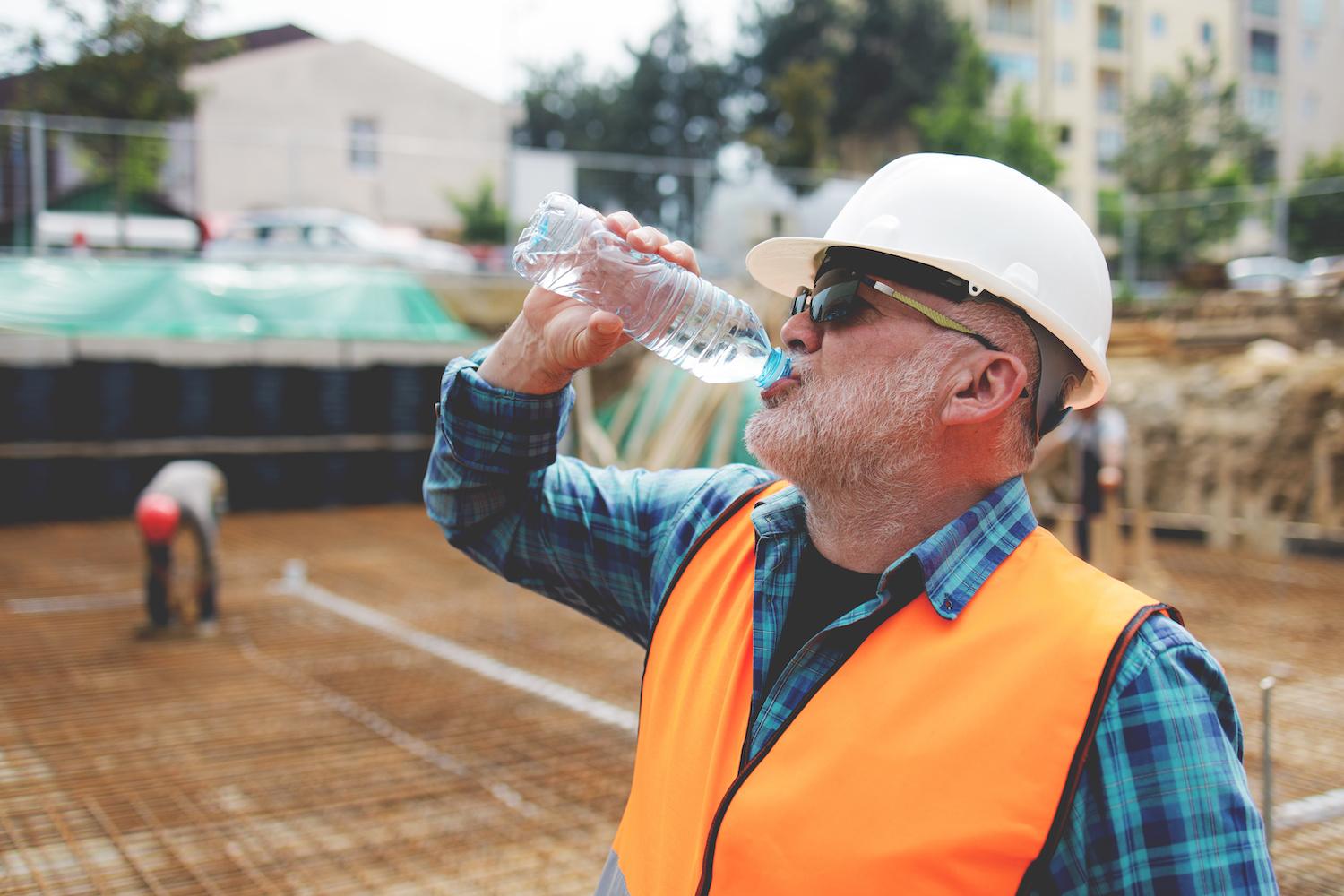
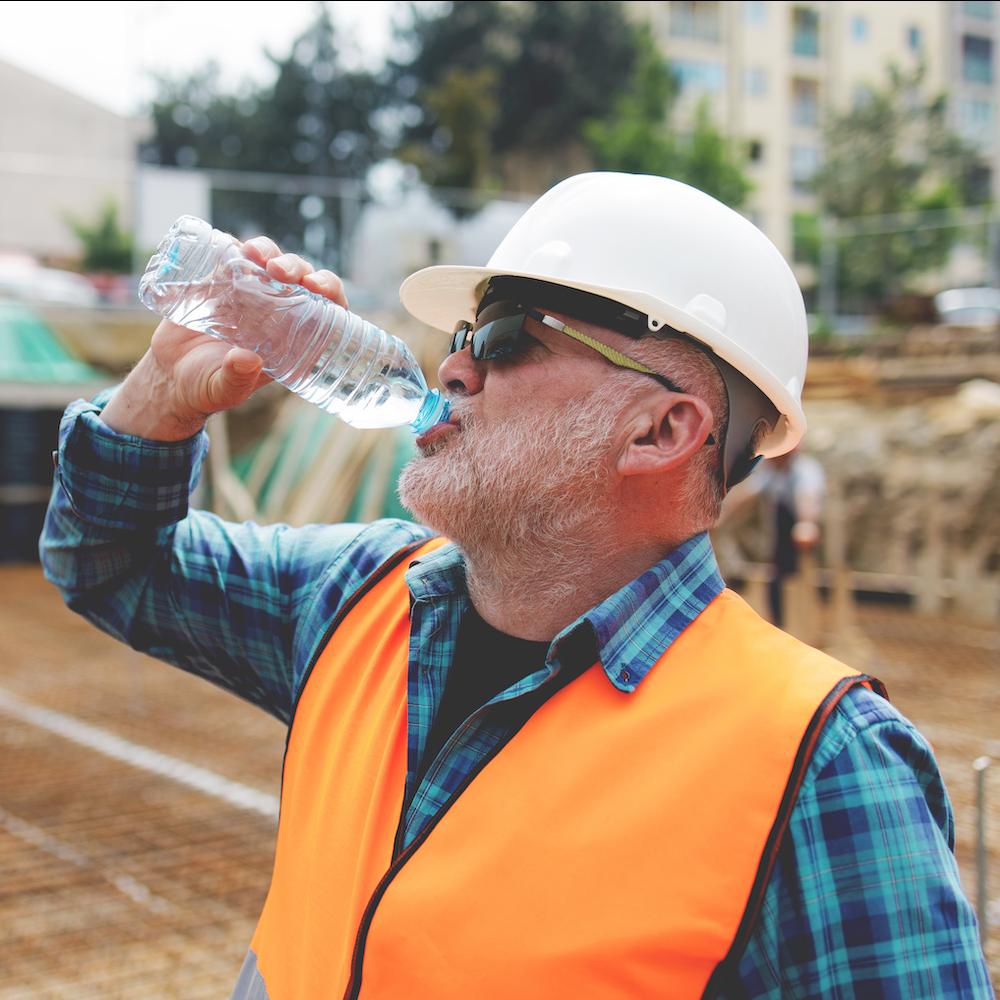
(Image: romul014/Adobe Stock)
A summer of prolonged heat waves has renewed awareness about the danger of heat-related illness and death. Both are highly dangerous, but preventable. Refreshing some of the lessons learned during the COVID-19 pandemic can help employers ensure their workers are safe and healthy, while reducing the risk of delays or disruptions and avoiding litigation. Beyond the workplace, employers also have the power to advocate for long-term solutions that accelerate the pace of climate action, which can tamper the frequency of extreme weather events.
Heat is a killer, but a preventable one
All deaths attributed to extreme heat are preventable, according to the U.S. Centers for Disease Control and Prevention (CDC). Yet about 618 people die from extreme heat in the U.S. each year.
In hot conditions, the human body stays cool by sweating, and only by sweating. “When sweating isn’t enough to help you cool down, you’re at risk for a heat-related illness called hyperthermia,” warn the U.S. National Institutes of Health.
Heat-related symptoms of stress include exhaustion, cramps and rashes. Heat stress can lead to heat stroke, a potentially lethal condition that results when a person loses the ability to sweat.
Employers need to be especially vigilant regarding employees whose bodies may have a limited ability to respond to hot conditions due to preexisting medical conditions, such as obesity and diabetes among other factors.
Teens and children may be at outsize risk for heat-related illness on the job
Employers with teenagers on their payroll also need to exercise caution. For all the benefits of an after-school job, physical exertion in hot weather is a known hazard for young people who may not know their limits or recognize the signs that something is wrong. For example, more than 9,000 high-school athletes are treated for heat-related illnesses each year, the National Institutes of Health estimates.
“Risk factors include being obese and beginning practice during hot and humid weather, when athletes are not yet acclimated to physical exertion in heat,” NIH reported last year. Heavy physical labor could pose similar risks for teen workers.
Despite the risks, several U.S. states have recently loosened child labor laws, including Arkansas, Iowa, New Hampshire and New Jersey, with others considering similar action. Meanwhile, child labor law violations have been rising since 2015, potentially putting more children at risk.
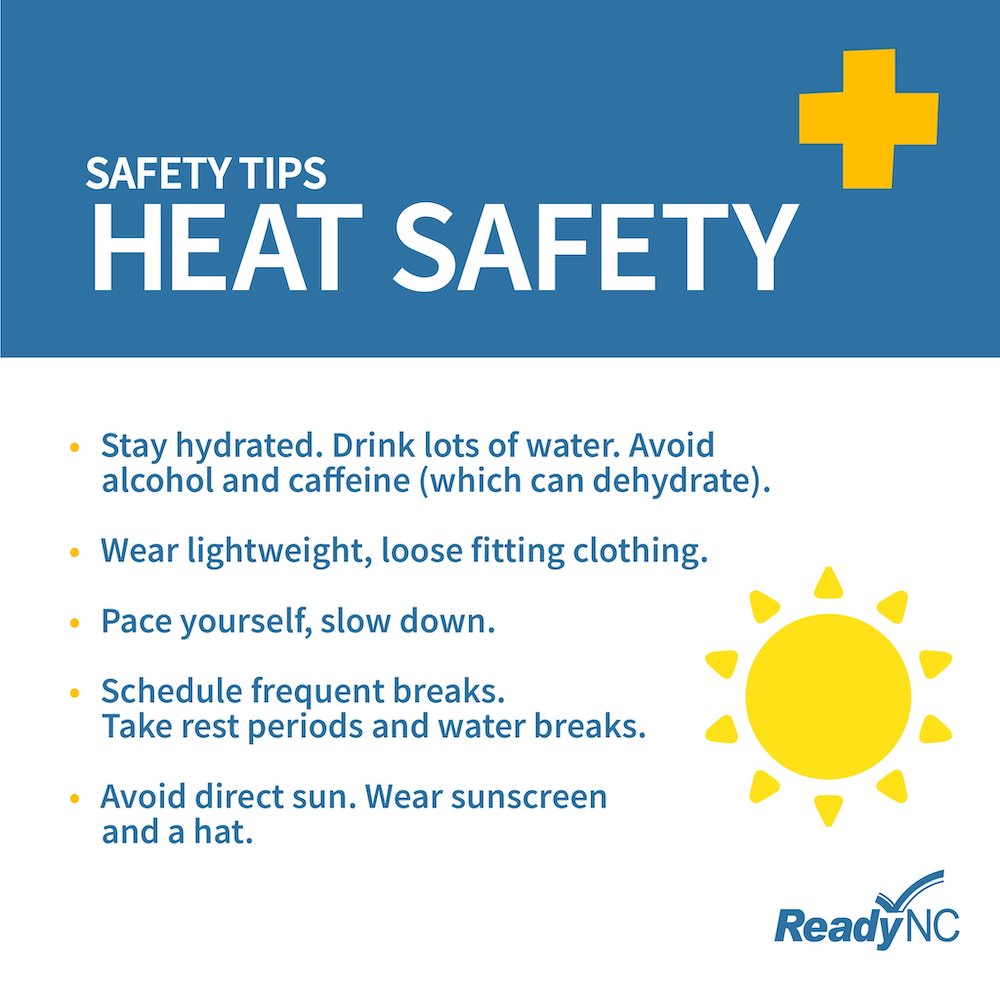
Heat wave safety: Recognize the signs and act quickly
Employers also need to watch for employees who arrive at work already stressed from a long commute, a second job, an after-school sport or a lack of air conditioning at home, among other potential risk factors. Poverty is also known to heighten risk for heat-related illness.
While heat-related workplace risks are often associated with heavy physical labor outdoors in the sun, shaded and indoor workspaces can also become unsafe. Acting quickly when an employee begins to show signs of heat stress is imperative. The Occupational Safety and Health Administration (OSHA) guidelines provide a quick refresher course on heat emergency response, available online in a quick-read poster format.
In particular, employers should be aware that the symptoms of heat stress can be confused with drug or alcohol abuse. Initial symptoms include headache, dizziness, fainting, irritability, confusion, thirst, nausea or vomiting.
Employers should call for medical assistance when an employee exhibits these symptoms and take immediate steps to help. OSHA recommends bringing the employee to a cooler area, fanning them, applying ice bags or cold towels, offering water, and removing outer clothing.
Heat stroke victims also exhibit symptoms similar to substance abuse. They may become confused and unable to think clearly. They may pass out, collapse or experience seizures. Reacting quickly with a mindset toward employee safety — rather than judging employees for behavior that appears off — can avert more serious illness.
Lessons learned during the pandemic can prevent heat-related illness
As with the COVID-19 pandemic, OSHA advises that employers establish a complete prevention program that goes into high gear during periods of increased risk.
Local health officials can advise employers about risk levels. The U.S. CDC also established an online heat-related emergency room visit tracker, which can further alert employers to heightened risks.
Along with educating individual employees on prevention, symptoms and treatment, OSHA advises employers to provide additional oversight by designating trained employees to monitor the workplace and by establishing a buddy system.
Employers that responded to the pandemic by modifying their workspaces and schedules can refresh those plans. Employers that created healthier workspaces with improved HVAC and airy break rooms can put those resources to work as cooldown areas. Assigning remote work is another option to deploy for employees who have cooling resources at home.
For physical work, OSHA also advises employers to gradually acclimatize new employees to the required level of activity. Making at least one pint of cool water per hour available near the workspace is a must, along with frequent cooldown breaks.
Employers are well advised to listen to the OSHA guidance on symptoms and cooldown strategies. On June 23, a 24-year-old construction worker died of heat stroke in Texas after reportedly exhibiting symptoms on the job including confusion, altered mental state and dizziness.

Beyond workplace safety: Advocate for climate action
Heat waves and heat-related illness have always been risk factors for businesses and the public at large. Climate change is raising those risks with increasing ferocity.
Global average temperatures increased almost every year over the past decade, with the 10 hottest years on record all occurring since 2010. The impacts are on full display this year as a seemingly endless series of extreme heat waves linger across the U.S. and around the world, leading to spikes in emergency room visits including burns from hot pavement.
All business stakeholders — investors, owners, managers and employees alike — have an existential interest in advocating for decarbonization policies that reduce the risk of climate-induced heat waves. Here are some ways they can make their voices heard.
Come together. Some business leaders are already taking action through advocacy groups like We Mean Business, a global coalition founded by seven organizations with expertise in sustainable business practices like carbon disclosure.
Bring a close eye to political spending. To go further, companies can also take a closer look at how they spend their political donations, ensuring they do not finance candidates who oppose government action against climate change.
Get out the vote — and make sure people have the time. Businesses can also support climate action candidates by ensuring their employees, customers, and clients have a free and equal opportunity to exercise their vote or to serve as poll workers. The Time to Vote campaign is one effective place to start. Those with the platform can also amplify resources that meet voters where they are, like their favorite mobile apps. Spotify, for example, encouraged voters to learn about voter registration and other resources during the 2022 midterm elections through its partner organization, HeadCount.org. SnapChat also partnered with the organization BallotReady for an in-app voter registration drive last year.
For more information and resources on preventing heat-related illnesses and heat stroke, read the CDC report, “Heat-Related Illness.”
As Abortion Restrictions Mount, Companies Work Behind the Scenes to Ensure Reproductive Rights for Their Employees
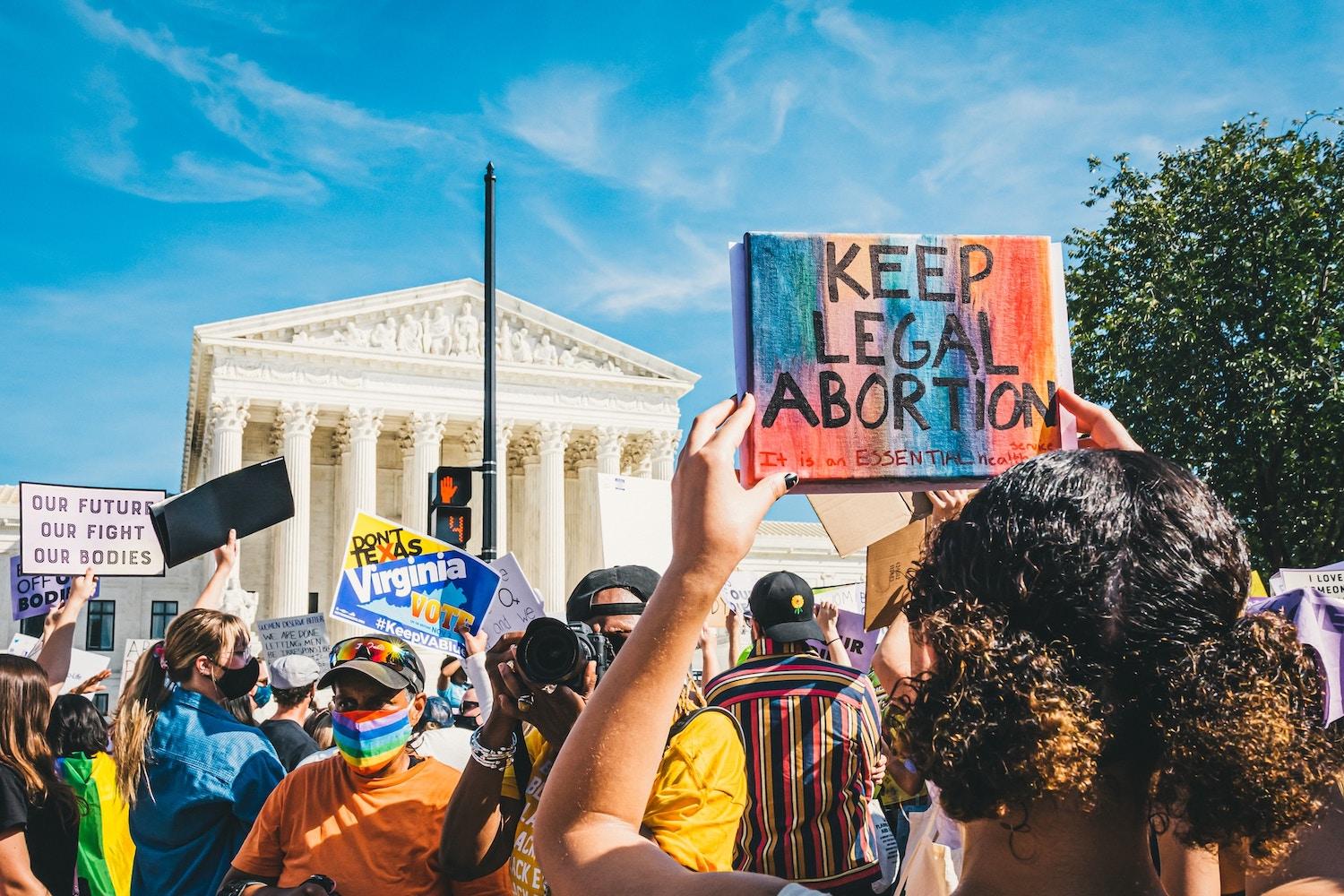

Demonstrators gather in Washington, D.C. to support reproductive rights in October 2021. (Image: Gayatri Malhotra/Unsplash)
It may be happening quietly behind the scenes rather than emblazoned in public statements, but hundreds of companies are showing their support for reproductive rights more than a year after the U.S. Supreme Court overturned Roe v Wade, ending the right to abortion.
One way in which companies are banding together on this issue is through the Don’t Ban Equality coalition, which has nearly 1,000 signatories ranging from small- and mid-sized firms to large household brands like Ben & Jerry’s, Dove and Levi Strauss & Co. The coalition’s position is that “restricting access to comprehensive reproductive care including abortion threatens the health, independence and economic stability of our workers and customers.”
Many of the companies signed on following the leaked draft of the Supreme Court ruling overturning Roe v. Wade in May 2022, with hundreds of signatures flooding in after the eventual decision a month later, said Jen Stark, co-director of the Center for Business and Social Justice, which is part of BSR, a sustainable business network and consultancy.
“The coalition has provided a space where companies can signal to their employees that they understand this is a larger workforce and economic issue and that they are on this journey to understand how to act and respond in the wake of all that is happening,” Stark said.
Recognizing abortion access as a business and economic issue
Reframing reproductive rights as an economic and workforce issue is crucial, Stark told us. “It is as much about economic justice, economic empowerment and economic access as anything else.”
The economic losses from existing abortion restrictions, including labor force impact and earnings, already cost U.S. states an estimated $105 billion annually, according to Don’t Ban Equality. The New York Times Dealbook is among the business publications to cover abortion as a workforce issue that should be on companies’ radars, Stark said. Meanwhile, investors filed at least 31 shareholder proposals addressing access to reproductive healthcare for 2023 proxy ballots.
The issue of reproductive rights also impacts hiring and retention of employees, who want to be assured that this aspect of healthcare will be part of their employee benefits, Stark added. In an April poll from BSR and Morning Consult, workers said they prefer to live in a state where abortion is legal and accessible than where it is illegal and inaccessible by a margin of 2:1.
“This underscores how reproductive rights are a workforce readiness and health and wellbeing issue.” Stark said.
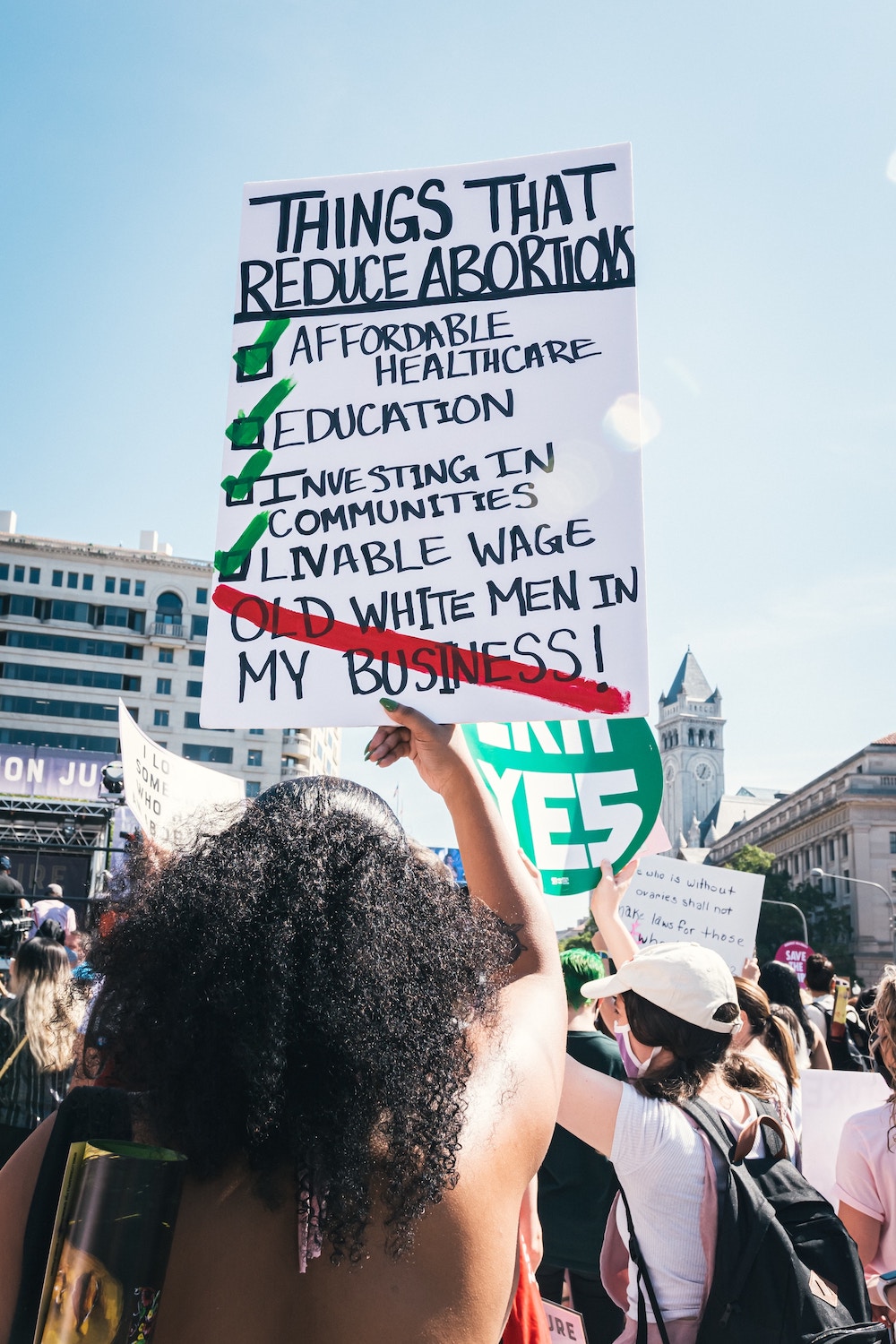
How companies are taking action
Some companies are vocal about how abortion restrictions impact their ability to maintain and grow a business in a given state, such as pharmaceutical manufacturer Eli Lilly and engine maker Cummins in the wake of a near-total abortion ban enacted in Indiana.
Others are working behind the scenes at the state level where bans are being enacted, Stark said. “They can throw needed sand in the gears to slow down the speed with which elected officials would like to enact these bans and restrictions. I think business voices even privately exerting influence on state-level abortion bans is very powerful.”
Yet many more companies are working quietly to address the impacts of abortion restrictions on their employees. “In these fraught times, we see that companies are most comfortable taking action within their own walls by enhancing or updating their benefits to meet the needs of their workers," Stark said. "They want to ensure their benefits are accessible and inclusive to the widest swath of their workforce.”
Why reproductive rights are human rights
Many in the U.S. don’t take into account that reproductive rights are human rights, said Paloma Muñoz Quick, associate director of human rights at BSR. This right was enshrined in an international treaty in 1979, called the Convention on the Elimination of All Forms of Discrimination Against Women. The U.S. is one of only seven countries — including Iran, Sudan, Somalia, Nauru, Palau and Tonga — that have not yet ratified the Convention.
But the fact that the U.S. is not a signatory should not matter to business, Muñoz Quick’s said. “The expectation for companies is that they respect internationally recognized human rights, irrespective of whether governments do their job to protect human rights, in this case, women's rights. The idea in this context is that companies continue to support and encourage and ensure that women who are pregnant have access to abortion, whether that’s employees or others who are connected to their business.”
By moving to protect reproductive rights, companies can be confident they're aligned with "an approach that has been agreed upon widely by governments all over the world," Muñoz Quick said. "The company’s stance is therefore a transparent, principles-based and thoughtful approach which provides the clearest path forward."
She pointed to this guidance to help business leaders better understand how to respect human rights, including reproductive rights, when domestic law does not uphold international standards.
Finding ways to respond amid pressure
What is certain is that contention around abortion won’t go away any time soon. The economic backlash is being increasingly felt. The 2023 CNBC rankings for America’s Top State for Business considered reproductive rights as a metric. That may have played a part in Texas, which has some of the country’s most restrictive abortion laws, falling out of the top five for the first time.
As of June, companies are also legally required to adhere to the federal Pregnant Workers Fairness Act which strengthens pregnant workers’ access to time off or job modifications, including time off to access abortion care.
Given the quickly evolving legal and societal landscape around abortion and reproductive rights, businesses need to consider carefully how they will respond, Stark said.
“At the heart of the discussion, we need to keep coming back to why this is a workforce and economic issue,” she said. “These are issues that are larger than any one company can solve for and requires system change and advocacy. At the end of the day, we need companies to seek to provide benefits to mitigate the harm.”